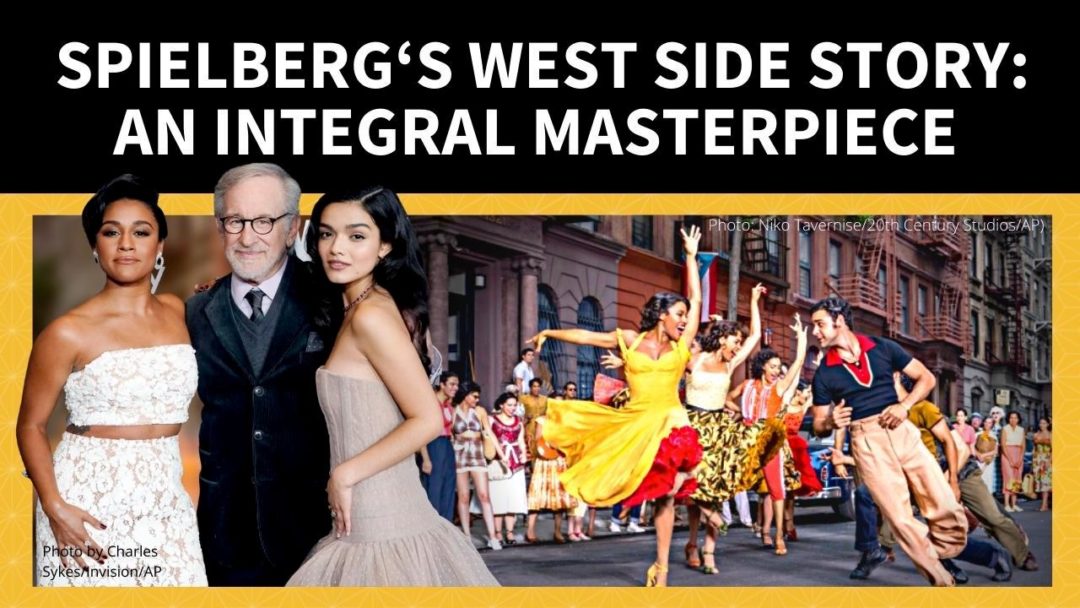In his remake of West Side Story, master filmmaker Steven Spielberg demonstrates how to bring a classic work of art into the present. Integrating the 60-year old Broadway musical’s cultural context into our own, his West Side Story expresses colliding worlds with deep sympathy and goodwill to all.
And the sheer cinematic transmission! From the iconic opening, with its call-and-response whistle echoing through the tenements of New York City, the film’s every moment is lit with the sparkle of humanity. It exudes the passion of youth, the grittiness of street life, and the deep liquid space of the gang and family. What a joy to be in the hands of a great artist (and leader of great artists, as cinema is our most collaborative of art forms) at the height of his power.
West Side Story tells a tale of race, culture and class conflict with a flamboyantly American flavor. It is the story of star-crossed young lovers (inspired by Shakespeare’s Romeo and Juliet), ethnic warfare, and the relentless march of modernity. In Spielberg’s hands, all of these conflicts are woven into a drama that is both particular and universal, and ultimately heartening. As Time Magazine’s critic Stephanie Zacharek wrote: “I had no idea I needed this West Side Story until I saw it.”
I hereby nominate this beautiful film for status as an integral work of art, and in this episode, I make my case. I hope you enjoy it and the movie too! – Jeff Salzman
VIDEO
AUDIO ONLY
Podcast: Download
Subscribe: Google Podcasts | RSS






